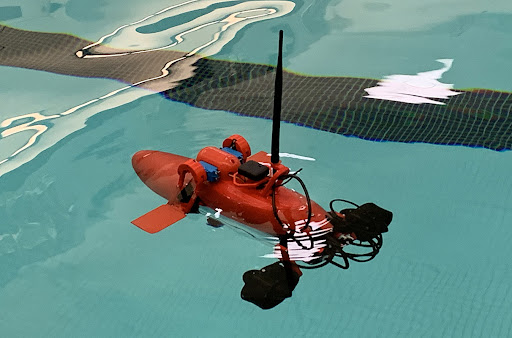Silver sieving aids, a 3D-printed semi-submersible and a robot that can deliver medicine inside the human body. Here are three of the latest tech innovations from across the world.
Semi-submersible craft
Engineers from the US’s Washington State University (WSU) have created a semi-submersible craft to demonstrate the most effective way to travel through water. Sailing at the water line, the unmanned craft does not need to withstand the high pressures a submarine experiences and is able to transmit data via a small platform exposed to the atmosphere.

“A semi-submersible vehicle is relatively inexpensive to build, difficult to detect, and it can go across oceans,” Professor Konstantin Matveev said. “It’s not so susceptible to waves in comparison to surface ships since most of the body is underwater, so there are some economic advantages as well.”
The WSU craft is built from 3D-printed and off-the-shelf parts, is 450 mm long and can travel at 1.5 metres per second, but could be scaled up for more sophisticated uses. At lower speeds, it barely breaks the surface, but since it experiences less drag in the water, it can operate more economically.
Silver sieving aids
Researchers at the University of New South Wales (UNSW) have identified a new process of recycling solar panels to maximise the recovery of silver. Chemical engineer and Director of the Process Modelling and Optimisation of Reacting Flows (ProMO) Lab Professor Yansong Shen said the process separates 99 per cent of photovoltaic cell particles.
“The key to our new process is the addition of the sieving aids which help to crush the solar cells into smaller particles allowing a better separation of all the components,” he explained.
“That makes it much easier to recover important elements such as the silver contained in the solar cells.”
The research team, which also tested sieving aids made of clay or plastic, uses containers of different sizes for different stages of the process.
“The main goal is to ensure that all of the PV cells particles can be crushed by the sieving aids, while the glass and other significant material remains intact at the top,” Shen said.
Medical microrobot
Engineers at the University of Colorado Boulder in the US have created a tiny, self-propelled robot that one day could be used to deliver medication to locations in the human body.
Travelling at about three millimetres per second and, at 20 μm, smaller than the width of a human hair, the robots were tested by having them deliver a steroid named dexamethasone to the bladders of lab mice.
“Imagine if microrobots could perform certain tasks in the body, such as non-invasive surgeries,” Dr Jin Lee said. “Instead of cutting into the patient, we can simply introduce the robots to the body through a pill or an injection, and they would perform the procedure themselves.”
Made from biocompatible polymer materials and designed with fins, the robots are propelled with the help of a trapped air bubble inside them; when exposed to an acoustic field, the air in the bubbles begins to vibrate.